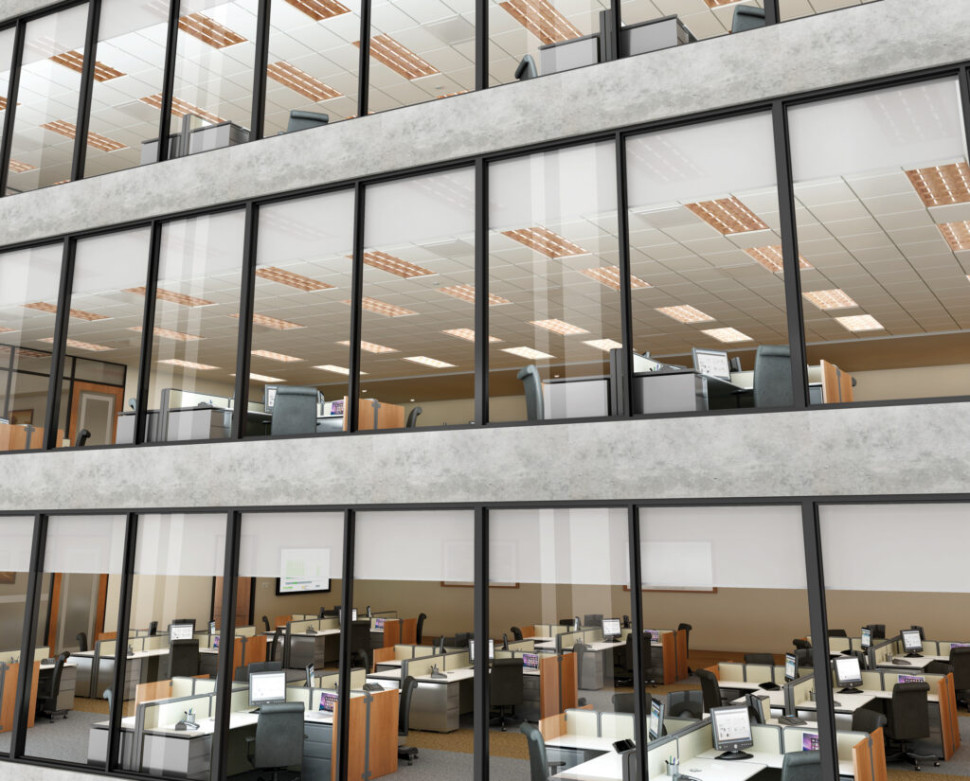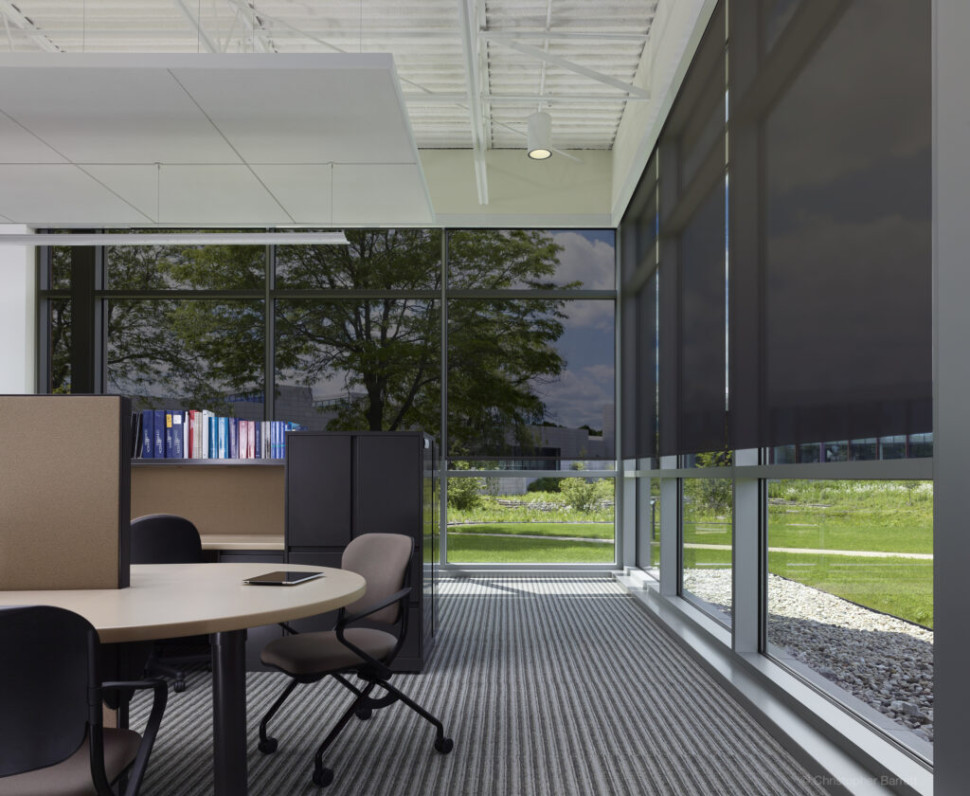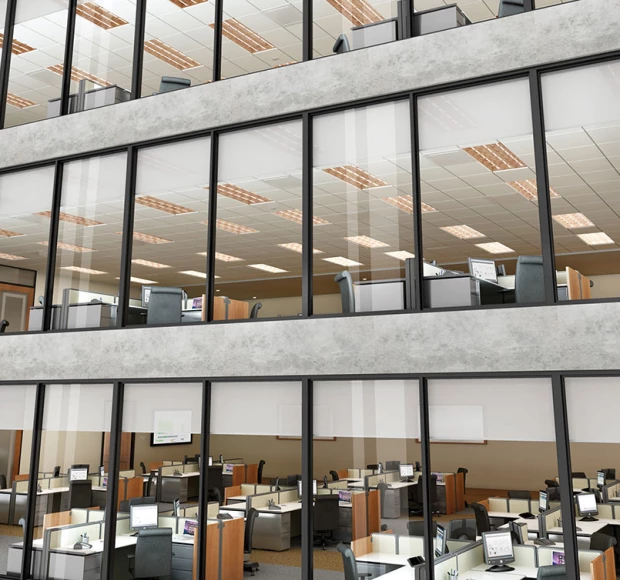In our last blog post, we looked at Boston’s ambitious goal of completely eliminating its reliance on carbon-based energy by 2050, with all energy in the city coming from carbon-free sources by that year. We discussed how daylight harvesting systems can help with this goal by reducing energy consumption through appropriate automated shading and lighting controls.
One example of an active daylighting system that can help Boston on its way to becoming carbon-free by 2050 is Lutron’s solar-adaptive Hyperion system. Hyperion automatically adjusts shades throughout the day in response to the sun’s changing position, which both saves energy and reduces solar glare and heat gain. Information about the building’s location and glass façade orientations is analyzed to create customized shade schedules that maximize the amount of useful daylight, thus reducing energy consumption by minimizing or eliminating the need for supplemental electric light.

Wireless Radio Window Sensors add further functionality to Hyperion by accounting for varied conditions such as weather or shadows from adjacent buildings, reporting live exterior conditions and then adjusting shades accordingly. Also, the Hyperion software allows facilities’ staff to manage electric light and daylight for maximum energy efficiency, comfort, and productivity. Manual override is available as an option for specific instances. Hyperion’s automated shading maintains ideal light levels while also lowering demand on a building’s HVAC system by preventing solar heat gain. It can reduce lighting energy use by 65% or more, and Hyperion is scalable from a single area or individual building to a campus with multiple buildings.
Hyperion also integrates seamlessly with Quantum, Lutron’s lighting control and energy management system, designed to further improve energy efficiency by adjusting light in tandem with shades through smart lighting control. Quantum is a single data and management platform for connected buildings, delivering a simple and consistent user experience from a PC or tablet. Customizable alerts, space utilization reports, occupancy trends, and energy reports all provide actionable data to improve building layout, defer capital expenditures, deliver a more energy-efficient space, and reduce a building’s carbon footprint.

The report issued earlier this year by the Boston Green Ribbon Commission indicated that “…nearly every building in Boston will need to undergo retrofits that holistically and dramatically reduce energy consumption.” Buildings currently account for more than two-thirds of Boston’s greenhouse gas emissions. By utilizing an active daylighting system such as Hyperion in a building, energy demand is reduced, and electric energy can therefore be redirected elsewhere. This reduction in energy consumption subsequently leads to carbon-based sources of energy being phased out, as they are no longer needed due to more efficient energy management.
Keep an eye out for our next blog post, where we’ll be exploring another active daylighting system: Mecho’s SolarTrac 4.0.

